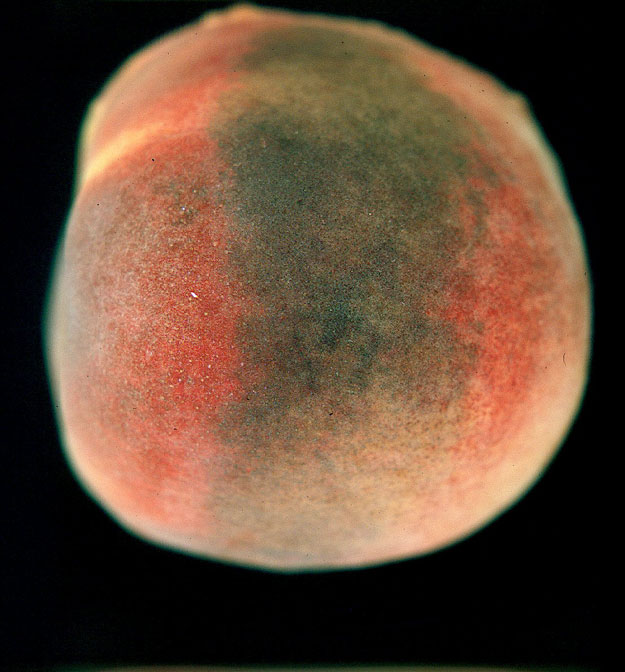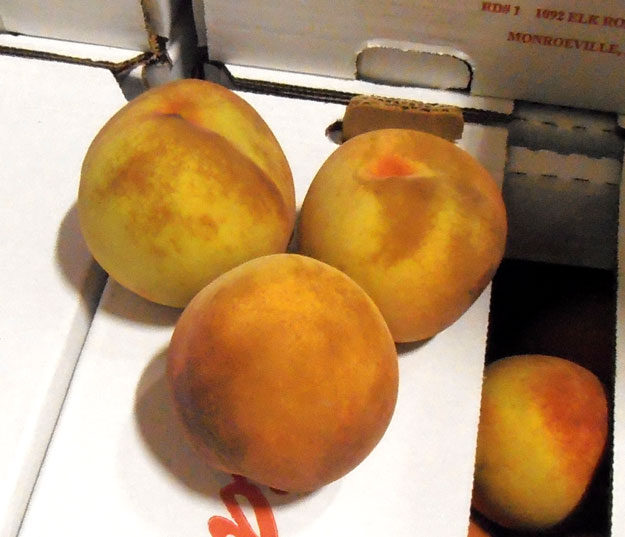You may receive peaches packed in cells, or a place pack, or they may be volume filled, or a jumble pack. Either way, you must still be on the lookout for peaches with soft, bruised spots, or peaches that exhibit surface discoloration. Surface discoloration may take on different looks, ranging from small rubs to extremely black discolored areas.

Hopefully you will never encounter peaches with black discoloration, as shown above. This occurred when the peach was being packed, as the conveyor belt continued to roll while the peach was sitting still. The discoloration would not have been seen at the time of packing, but within a few days the discoloration would be very obvious.

This type of discoloration on peaches is much more common. The exact cause is unknown, but somewhere along the packing/shipping process the peaches were subjected to rubbing or movement within the container that produced the discoloration. Remember, the discoloration is caused when the surface of the peach is damaged, resulting in oxidation, or a discoloring to the cells. Rough handling when harvested, packed or shipped could have caused the discoloration. Because of this, you may find the surface discoloration isolated to the back 2-4 pallets of the trailer; or it may be found only in the top 3 layers of pallets. If the discoloration occurred prior to packing then the affected peaches would exhibit no pattern, but would be scattered throughout the pack and load.
Fortunately, the USDA does have specific scoring guidelines to use, if you find surface discoloration. The area allowed is associated with the darkness of the discoloration. The USDA allows a greater area for lighter discoloration versus darker discoloration, but not that much more. Shown below is the scoring guideline for surface discoloration developed by the USDA:

Using the guideline, the black discolored area shown in the top image would exceed the area allowed (1/2″), and would be scored as a defect.
In the second image, all three peaches exceed the area allowed for medium brown discoloration (3/4″), and would be scored as a defect.
And remember, you would be allowed 14% defects in peaches, with not more than 7% defects being serious damage.

No Comments on “Peaches- Surface Discoloration”